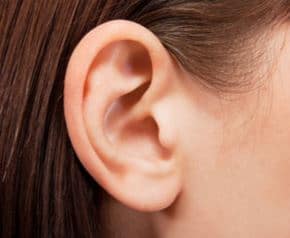ATLANTA, GEORGIA — A doctoral student from the Georgia Institute of Technology, Alexis Noel, believes that earwax could potentially be a template for the development of adhesives for applied usage in technology, such as robotics and other machinery. According to an article in Science Daily, Noel became inspired to study earwax following an event that occurred during a vacation with her boyfriend.
While swimming on vacation, her boyfriend got water trapped in his ear. Despite their best efforts, they could not get the water out of his ear canal. Eventually, the couple made their way to the doctor’s office and were told that the water was being held in place by earwax.
“A couple years later I was reminiscing and thought: why would it block the water like that? And it just started this snowball effect of me and David [Hu] just asking questions about earwax and how it works”
It was after recognizing the surprising properties of earwax, that Noel and David Hu, Associate Professor of Mechanical Engineering and Biology at the Georgia Institute of Technology, realized that the substance could possibly be used as a template for developing adhesives for applied usage in technology. However, they knew they had to first understand the complex behavior of earwax.

Turns out the properties of earwax are highly consistent across species
She began, along with undergraduate researcher Zac Zachow, by investigating earwax from samples obtained from several animals – pigs, sheep, rabbits and dogs.
Noel and Zachow found that the properties of earwax across animal species were very consistent, despite a wide variety of different ear shapes and sizes. Properties such as thickness, appearance, and flow, were all highly consistent between different mammals. They concluded that this finding appears to indicate that these similar properties of earwax appear to be a successful solution across species.
Unique Properties of Earwax
Noel and Zachow also observed differences in ear canal shapes and jaw motion across species to see how those factors influenced the flow of earwax. They found that earwax is a shear-thinning fluid, meaning that it is thick and sticky when left alone, but when force is applied, it will flow more quickly.
In the ear, earwax traps debris and bacteria within a web of small hairs in the ear canal coated with sticky wax. According to Noel and Zachrow, as earwax accumulates dust it becomes crumbly “like adding too much flour to dough when making bread.” This process then allows the dusty wax to separate and fall out of the ear, which will then be replaced by cleaner wax.
Noel believes that by studying these unique properties of earwax, we can one day develop some sort of biomimetic earwax adhesive surface that can be used in a ventilation system for robotics or for other kinds of machinery.
Source: SCIB, Science Daily






